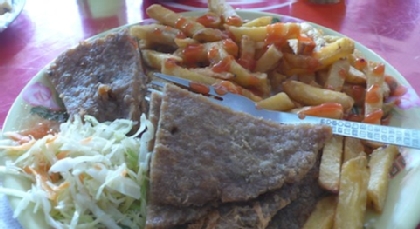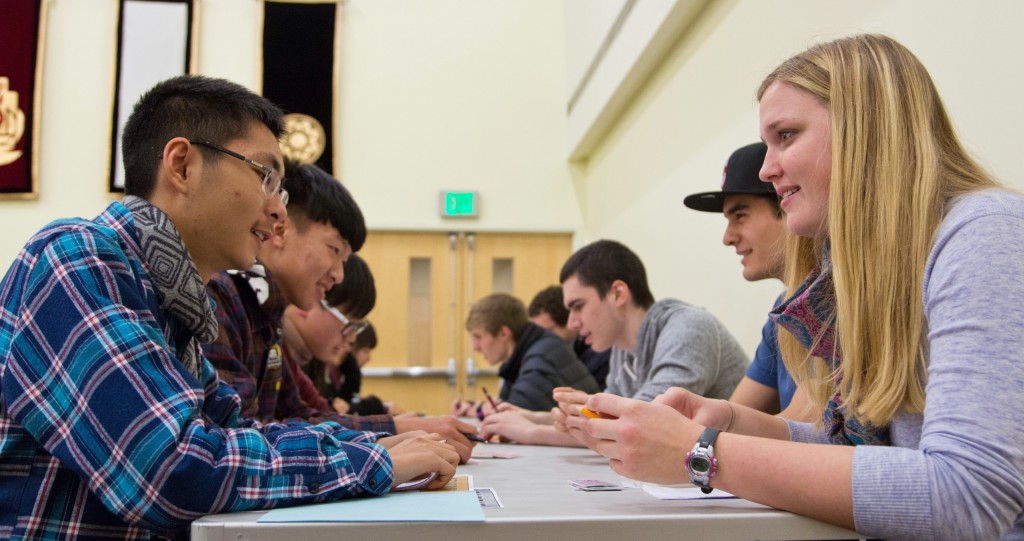Page 25 • (1,269 results in 0.033 seconds)
-
2016-17 Bjug Harstad Memorial LectureSigbjørn Skåden - 7pm October 4th in the PLU Scandinavian Cultural Center Sigbjørn Skåden, an award-winning Sámi poet and novelist from Norway, will deliver this year’s Bjug Harstad Memorial Lecture at 7 pm on Tuesday, October 4th, in PLU’s Scandinavian Cultural Center. Born in 1976, Mr. Skåden has written in both his native North Sámi, one of the languages of the Indigenous Sámi people, and in Norwegian, and will be discussing his works’ thematization of
-
from Benin City meets alluvial plains of the delta proper, in an area encompassing 5000 square kilometers,” (Foss:12). Traditional Urhobo maintain strong cultural beliefs and practices, and are deeply spiritual. A strong connection between water and spirituality thrives in the region and is found in their art, festivals, and customs. When looking at Urhobo art it becomes clear that the authority and wisdom of ancestors, as well as forces of nature are the two most important spiritual factors in the
-
, visits to local cultural attractions Scholarship details: Scholarship covers tuition, accommodation (double room on university campus) and comprehensive medical insurance Participants are responsible for international travel, learning materials, meals and admission tickets to cultural sites in China Application Requirements 1) Age: 16-35 years old 2) HSK result (any level) 3) Do not have any experience of studying in China before Application Procedure Register for HSK test at www.chinesetest.cn (if
-
Craft Production at Late Postclassic Coatlan Del Rio” Tanner Premo “Cultural Adaptation: Gold Rush Mining Communities of Southeastern Australia” Cessna Westra “Reassessing Cultural Dynamics: Updating the Accuracy of the Precontact Occupational Chronology for the Willamette Valley”
-
data.FieldsAnthropology at PLU is composed of four fields: Cultural anthropology studies living human cultures in order to create a cross-cultural understanding of human behavior. Archaeology has the same goal as cultural anthropology, but uses data from the physical remains of past cultures to reach it. Linguistic anthropology studies the interrelationships between language and other aspects of culture and how languages have changed over time. Physical anthropology studies the emergence and subsequent biological
-
-12:20pm Location: Scandinavian Cultural Center Dr. Michael Schleeter (Philosophy) Holly Foster (Zestful Gardens) Anika Moran (Mother Earth Farm) Dr. Justin Lytle (Chemistry) Food Consumption Panel Monday, February 29, 12:30pm-1:35pm Location: Scandinavian Cultural Center Dr. Suzanne Crawford-O’Brien (Religion) Dr. Kevin O’Brien (Religion) Ryan Ceresola (Sociology) Sue Potter [Executive Director FISH] “Waste Not” Screening Monday, February 29, 1:45pm Location: Scandinavian Cultural Center PLU
-

January 28, 2010 Uganda: Food blog By Theodore Charles ’12 One of the things I have found most exciting about living in Kampala is trying a variety of different cultural foods. There are many different places that you can try these foods, ranging from expensive and boutique to roadside vendors on highways between towns. “The food here is not only delicious, it is a cultural experience that is not to be missed.” (Photo by Theodore Charles’12) I decided to throw together a short list of some must
-

February 7, 2014 Chinese students pair up with Lutes in a “speed-dating” exercise at PLU on Jan. 30 designed to discover cultural intersections. (Photo: John Froschauer / PLU) International ‘Speed Dating’ Creates Cultural Connections By James Olson ’14 Students from six Beijing high schools congregated in the Anderson University Center on Jan. 30 to participate in a cultural exchange that looked a lot like a speed-dating session—on purpose. The students, who were visiting Pacific Lutheran
-
IntroductionAfrican ArtFind out moreIn terms of land mass, Africa is a large continent, in which all of the United States, Europe, China, India, Mexico, and Japan could easily fit. It is also a place of tremendous diversity, in terms of languages spoken, ethnic identities, cultural traditions, environments in which people live and work, and historic experiences. Sadly, popular culture has profoundly shaped what Africa, Africans, and their rich and diverse cultures are “supposed” to look like
-
Holocaust and Genocide Studies Learning Outcomes 1. Students will locate the Holocaust and other genocides in their historical and cultural contexts. 2. Students will identify and critically reflect on moral, spiritual, and ethical issues that are central to learning about, and from, the Holocaust and other genocides, including dehumanization, complicity, and resistance. 3. Through engaging with and analyzing written texts, images, monuments, and other cultural and artistic phenomena students
Do you have any feedback for us? If so, feel free to use our Feedback Form.


